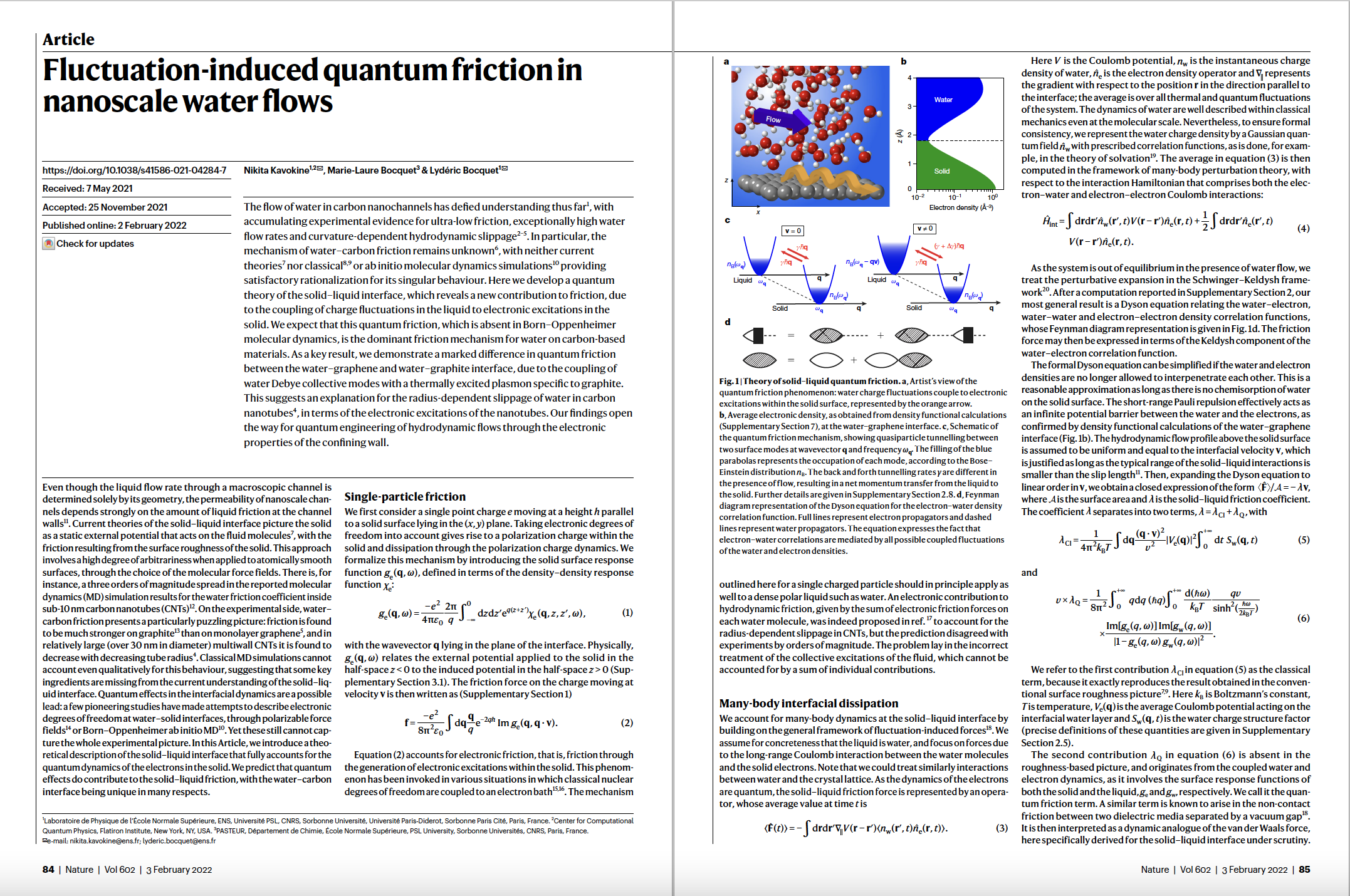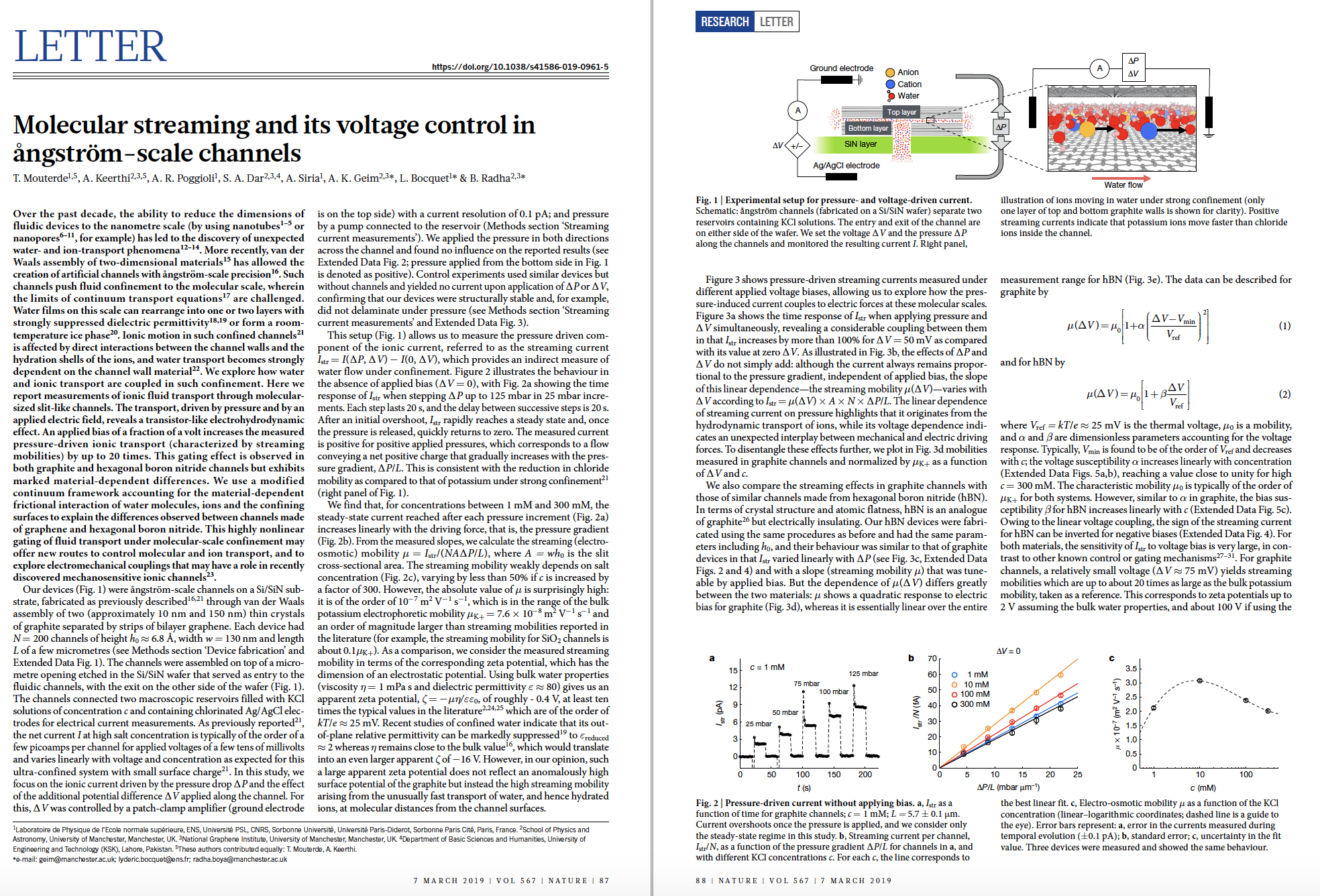My main line of research over the past ten years has been nanofluidics, the science of molecular flows. This world of the infinitely small in fluidics is the frontier where the continuum of fluid mechanics meets the atomic or even quantum nature of matter. In the team, we have developed unique experiments to study fluid transport in individual nanochannels, demonstrating giant osmotic transport in boron-nitrogen nanotubes, ultra-fast flows in carbon nanotubes - highlighting quantum friction effects -, or the demonstration of neuromorphic effects in two-dimensional systems.
Nanofluidics is also a field where the path from fundamental science to breakthrough innovation is short, notably for desalination, water remediation or osmotic energy. My fundamental research has led to the creation of four start-ups, including Sweetch Energy in the field of osmotic energy and Hummink in the field of additive manufacturing on a nanometric scale.









